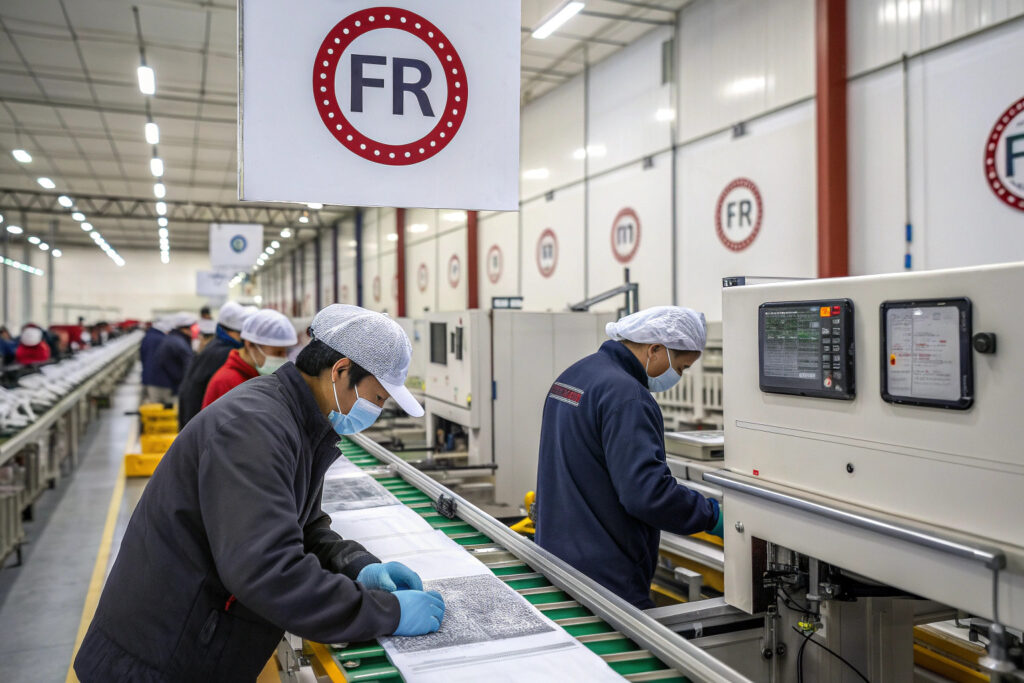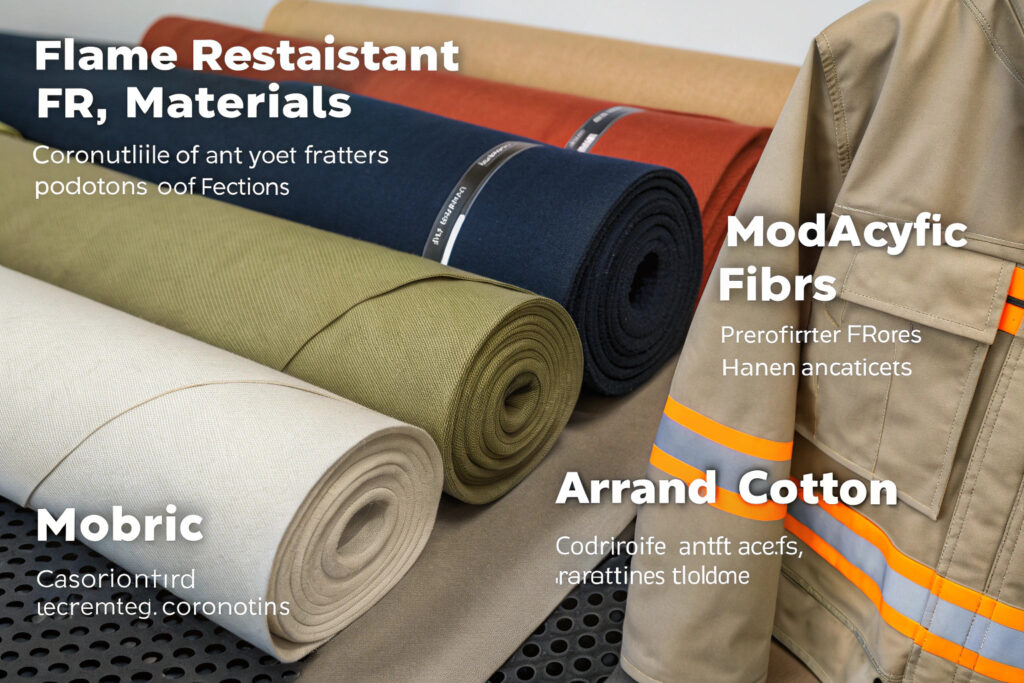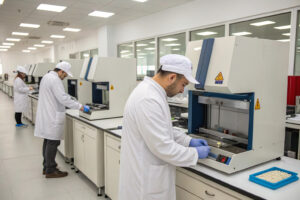Workplace safety is non-negotiable, especially in industries where fire hazards are a daily reality. Many safety managers struggle to find headwear that meets both safety standards and comfort requirements, often settling for inadequate protection or uncomfortable designs that workers avoid wearing.
The most reliable fire-retardant hat manufacturers are typically specialized safety equipment producers with certified manufacturing facilities, third-party testing capabilities, and expertise in industrial safety standards like NFPA and OSHA requirements.These manufacturers combine technical fabric knowledge with rigorous quality control processes to ensure every hat provides consistent protection in high-risk environments.
This guide will help you identify qualified manufacturers, understand certification requirements, evaluate material technologies, and establish supply chains for FR-rated headwear that keeps your workforce safe and compliant.
What certifications should genuine FR hat manufacturers have?
Certifications are the foundation of fire-retardant manufacturing credibility. Without proper certifications, you cannot trust that the hats will perform when needed most. Many suppliers claim FR capabilities but lack the necessary documentation to back their claims.
Legitimate FR hat manufacturers must have facility certifications for quality management and product-specific certifications for fire resistance. These verifications ensure consistent manufacturing processes and independent validation of safety claims.

Why is NFPA 2112 certification crucial for flash fire protection?
NFPA 2112 certification is essential because it specifically addresses protection against flash fires—sudden, intense fires that can engulf workers in oil and gas, chemical processing, and other high-risk industries. This standard tests the entire garment system, including hats, for thermal resistance, heat transfer reduction, and after-flame duration. Manufacturers with NFPA 2112 certification have demonstrated that their products can significantly reduce burn injuries during a flash fire event. The certification requires rigorous third-party testing of both materials and finished products, ensuring comprehensive protection.
What do ISO 9001 and ISO 14001 indicate about manufacturer reliability?
ISO 9001 and ISO 14001 certifications demonstrate a manufacturer's commitment to consistent quality and environmental responsibility. While not specific to FR performance, ISO 9001 certification indicates robust quality management systems that ensure every production batch meets the same high standards. This is crucial for FR products where consistency can be a matter of life and death. ISO 14001 shows environmental management commitment, which often correlates with careful chemical management in FR treatment processes. Manufacturers holding both certifications typically have more reliable production systems and better documentation practices.
Which materials provide the best fire retardant protection?
The foundation of any effective FR hat is the material technology. Not all FR treatments are created equal, and understanding the differences can determine both protection level and product longevity.
The most effective FR materials include inherent FR fibers like modacrylic, FR-treated cotton, and aramid blends that provide permanent protection without compromising comfort or durability. Each material offers different advantages for various workplace conditions.

How do inherent FR fibers differ from treated fabrics?
Inherent FR fibers provide permanent fire resistance built into the polymer structure, while treated fabrics receive chemical applications that impart FR properties. Inherent fibers like modacrylic blends maintain their FR protection for the life of the garment, regardless of washing or wear. Treated fabrics, typically cotton or cotton blends, rely on chemical coatings that can diminish over time with repeated laundering or abrasion. For headwear that requires long-term reliability and multiple cleaning cycles, inherent FR fabrics generally offer more consistent performance and better value despite higher initial cost.
What are the advantages of aramid fibers for thermal protection?
Aramid fibers like Nomex and Kevlar offer exceptional thermal protection while maintaining lightweight comfort—a crucial combination for headwear. These fibers don't melt, drip, or support combustion in air, providing reliable protection up to 800°F. Their inherent strength and durability make them ideal for headwear that faces rough industrial use. Aramid fibers also provide excellent arc flash protection, making them suitable for electrical workers. While more expensive than other options, their superior protection-to-weight ratio and durability often justify the investment for high-risk applications.
How to verify manufacturer testing capabilities?
Verifying testing capabilities separates truly qualified FR manufacturers from marketing claims. Proper testing ensures consistent protection across production runs and compliance with evolving safety standards.
Reputable FR manufacturers operate in-house testing laboratories, participate in third-party verification programs, and maintain detailed documentation of testing protocols and results for every production batch.

What equipment indicates proper in-house testing facilities?
Comprehensive in-house testing facilities should include vertical flame chambers for measuring after-flame and after-glow duration, thermal manikins for evaluating heat transfer, and tensile strength testers for assessing fabric durability. Manufacturers with vertical flame testers can conduct daily quality checks, ensuring consistent FR performance throughout production. Thermal protective performance (TPP) testing equipment measures the heat insulation properties, while arc rating testing setups evaluate protection against electrical arc flashes. These capabilities demonstrate serious commitment to product safety and quality consistency.
Why is third-party verification essential for FR claims?
Third-party verification provides objective validation of manufacturer safety claims. Organizations like UL Solutions and Intertek conduct independent testing to verify that products meet specified safety standards. This verification is crucial because it eliminates potential bias in manufacturer-conducted tests. Many industrial safety programs require third-party certified FR clothing, and having this certification significantly streamlines the approval process for your safety equipment. Manufacturers who invest in third-party verification typically have more robust quality systems and more reliable products.
What are the key considerations for FR hat design?
FR protection means nothing if workers won't wear the headwear. Design considerations significantly impact both safety effectiveness and user compliance in real-world working conditions.
Effective FR hat design balances protection with comfort, incorporating features like moisture-wicking liners, adjustable sizing systems, compatible accessory attachments, and appropriate coverage areas without restricting movement or vision.

How does design impact FR protection effectiveness?
Design directly impacts protection by determining coverage area, seam placement, and accessory compatibility. Proper FR hat design should cover vulnerable areas like the ears and neck without creating entanglement hazards. Seam construction must maintain FR integrity, using appropriate thread and stitching techniques that won't compromise during exposure. Designs should minimize gaps between the hat and other PPE while allowing integration with safety glasses, respirators, and communication devices. The brim design should protect the face without obstructing vision or trapping heat, balancing protection with practical functionality.
What comfort features maintain FR protection?
Comfort features that maintain FR protection include breathable moisture-wicking liners made from FR materials, adjustable sizing systems using FR components, and strategic ventilation that doesn't compromise coverage. Moisture management is particularly important because sweat can reduce the effectiveness of some FR treatments and cause discomfort that leads to non-compliance. Designs should incorporate wicking layers that pull moisture away from the skin while maintaining thermal protection. Adjustable features should use FR-rated materials for all components, including straps and fasteners, to ensure complete protection system integrity.
Conclusion
Finding qualified fire-retardant hat manufacturers requires careful evaluation of certifications, material technologies, testing capabilities, and design expertise. The most reliable partners combine technical knowledge with practical understanding of workplace requirements, delivering products that protect workers while ensuring comfort and compliance.
At Global-Caps, we manufacture FR-rated headwear with certified protection for various industrial applications. Our CNAS-certified laboratory tests every production batch, and we maintain complete documentation for compliance verification. If you need reliable fire-retardant headwear solutions for your workforce, contact our Business Director Elaine at elaine@fumaoclothing.com. Let us help you protect what matters most with headwear that meets the highest safety standards.







